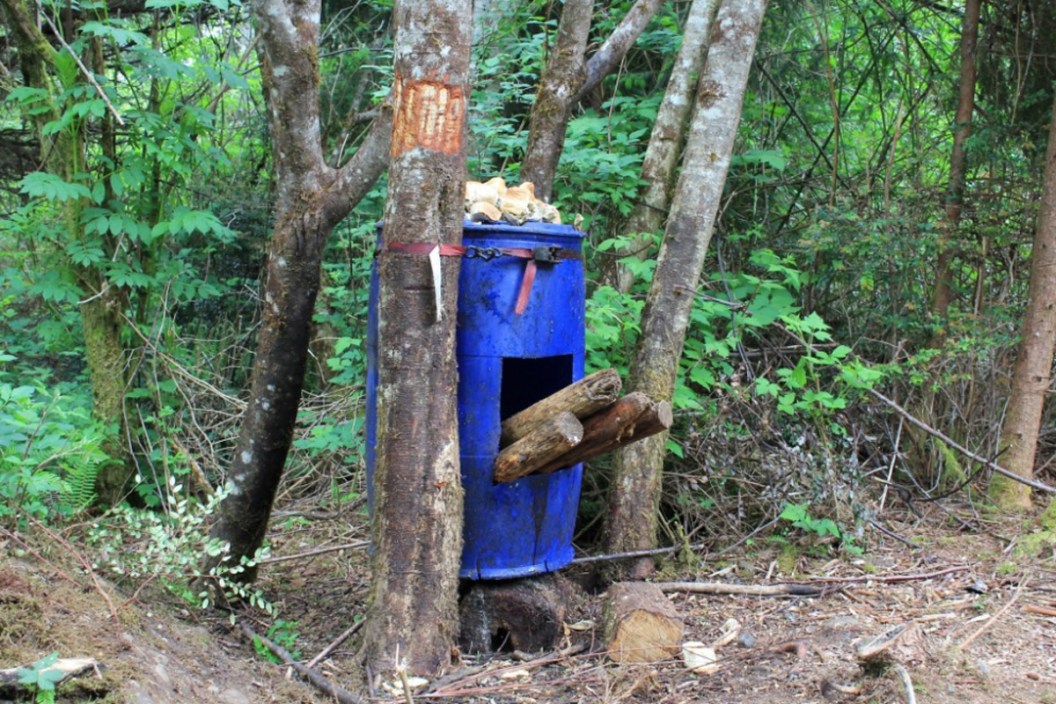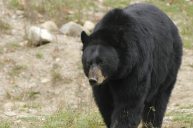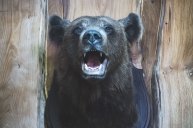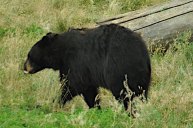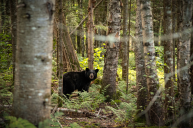Baiting bears—where it's legal—is a challenging, but effective way to take a monster black bear. Here's a step-by-step guide on how to bait bears.
Baiting is one of the most popular methods of hunting black bears throughout the United States and Canada. When done properly, it increases the odds of success and gives the hunter an opportunity to accurately evaluate the trophy quality of the bear before taking a shot.
Though baiting bears has recently come under fire, taking a bear over bait is far from a slam dunk. There are no guarantees that a good bear will come in and offer the hunter a shot, even when the bait is set up perfectly.
The key to successfully baiting a bear is doing your research beforehand. Before you even think about setting up your bait site, it's imperative that you are familiar with local regulations, scout the area to confirm there are bears and the times they move, and consider how you're going to be angled for a shot should everything come together.
Once you've established your basics, there are a number of things you can do to up your odds of successfully harvesting a bear over bait, but these are not animals you want to take lightly or approach without a plan.
Obey All State and Local Laws
Before you attempt to set up a bait site, ensure it is legal in your area. Every locality is different. It is legal to bait bears in some states and Canadian provinces, like Maine, Idaho, and Alberta, but illegal in many others, like Washington (with the exception of the Quinault Indian Reservation). Some states also require a special permit to hunt bears over a bait site.
Do your research on the local regulations and obtain any necessary permits well before bear season. Otherwise, you could be in for a rude, and potentially expensive, surprise if the game warden finds out you are doing something illegal.
When in doubt, double check! It's always better safe than sorry.
Find the Perfect Bait Site
After determining it is indeed legal to bait bears where you intend to hunt, the first step in setting up a bait site is to find a suitable location. Even a bait site containing the foods bears love the most will not be very successful if it is placed improperly. Do a little scouting before setting up your bait site, and try to find an area where there is already plenty of bear activity.
Travel corridors between popular bear food sources are good places to start. Bears often use old, deserted logging roads. They also seem to prefer low-lying areas in the vicinity of water, such as creeks.
Look for bear tracks, bear scat, and claw marks on trees (which you can see in some of the photos below). If you find an area heavily used by bears, start looking for a more specific place to place your bait. Your ideal bait location will be open enough to see and shoot clearly, but close enough to cover so the bears will feel comfortable eating at the bait site during the day.
Ideally, you'll locate several different good bait sites. This will allow you to run multiple bait sites at once and give you more choices for when bear season actually starts. At the same time, you don't want too many bait sites, as this can actually make them more difficult to hunt by providing an overabundance of food sources. A couple of strategically placed bear bait stations are much better than a bunch of haphazardly located sites.
Notice below how the bait barrel is located very close to the thick woods.
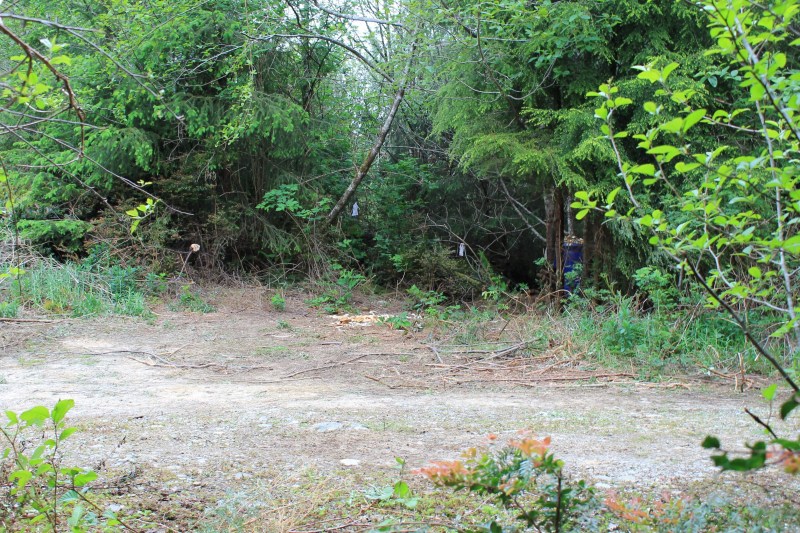
Pick the Right Bait
Fortunately, you can use many different types of bear bait. Black bears are omnivorous and will eat almost anything, especially in the spring when they come out of hibernation. If you ask 20 different bear hunters to name their favorite black bear bait, you'll probably get 20 different answers. Bread, doughnuts, and various different types of meat are probably the most popular bear baits.
Bears have very sensitive noses (arguably even better than deer and feral hogs) and seem particularly drawn to very pungent smelling baits, which makes fish a good choice. Some guides add brown sugar or scent attractants to the bait to literally sweeten the deal. Bear Bombs are very popular scent attractants that are commercially available at most sporting goods store. Pure vanilla extract and anise oil are also quite effective. The white rags hanging in the trees in some of the photos are scent rags sprayed with anise oil and vanilla extract.
Regardless of the type of bear bait you use, be sure to remove all wrappers and trash from the site after you place your bait. Leaving the trash in the woods is unsightly and illegal.
Set Up Your Bait Site
The most popular method of setting up a bait site involves a barrel with a hole cut in the side. This provides a good container for the bait and acts as a good size reference. Bears are notoriously difficult for an inexperienced hunter to judge. However, if the barrel is placed directly on the ground, a bear with a back as tall or taller than the barrel is a very big bear, and you should very seriously think about shooting it.
When setting up the barrel, you must secure it properly. Bears are very strong animals, and even a small bear will have little trouble moving an unsecured barrel. A ratchet strap is a simple, yet effective, way to secure your barrel to a nearby tree and prevent the bear from knocking it over and rolling it off into the woods. This will force the bear to consume the bait in the clearing, where it is exposed for a shot.
Additionally, place your bait inside the barrel, on top of the barrel, and scattered over a fairly large area outside the barrel. This serves several purposes. It makes the bait easier to find by bears and other animals, such as crows.
When crows discover the bait site, they often make all sorts of noise as they eat. This lets any bears in the area know there is food at the bait site. Scattering the bait around also forces the bear to hang around longer to eat all of the bait, instead of just eating from a single pile.

Another good tip is to place a few logs on top of the bear bait in the barrel. Use four or five logs slightly larger than your forearm. These should be too heavy for other animals like crows and raccoons to move to access the bait.
They should be no problem for a bear to move. This will ensure some bait will remain for the bear, even if other animals get there first. If you don't have a trail camera, seeing the logs scattered outside the barrel also provides a good indicator that a bear visited the bait site.
Set Up a Trail Camera
Setting up a trail camera over your bear bait site is another important step. It enables you to accurately determine whether a bear is hitting your bait, and it gives you vital information, such the size of the bear and the time it normally visits. If bears hit several bait sites at the same time, this information can help you decide which one to hunt.
For example, the photo below is a trail camera photograph from a recent bear hunt. Based on the size of the bear relative to the barrel, you can tell that this is a decent-sized bear.
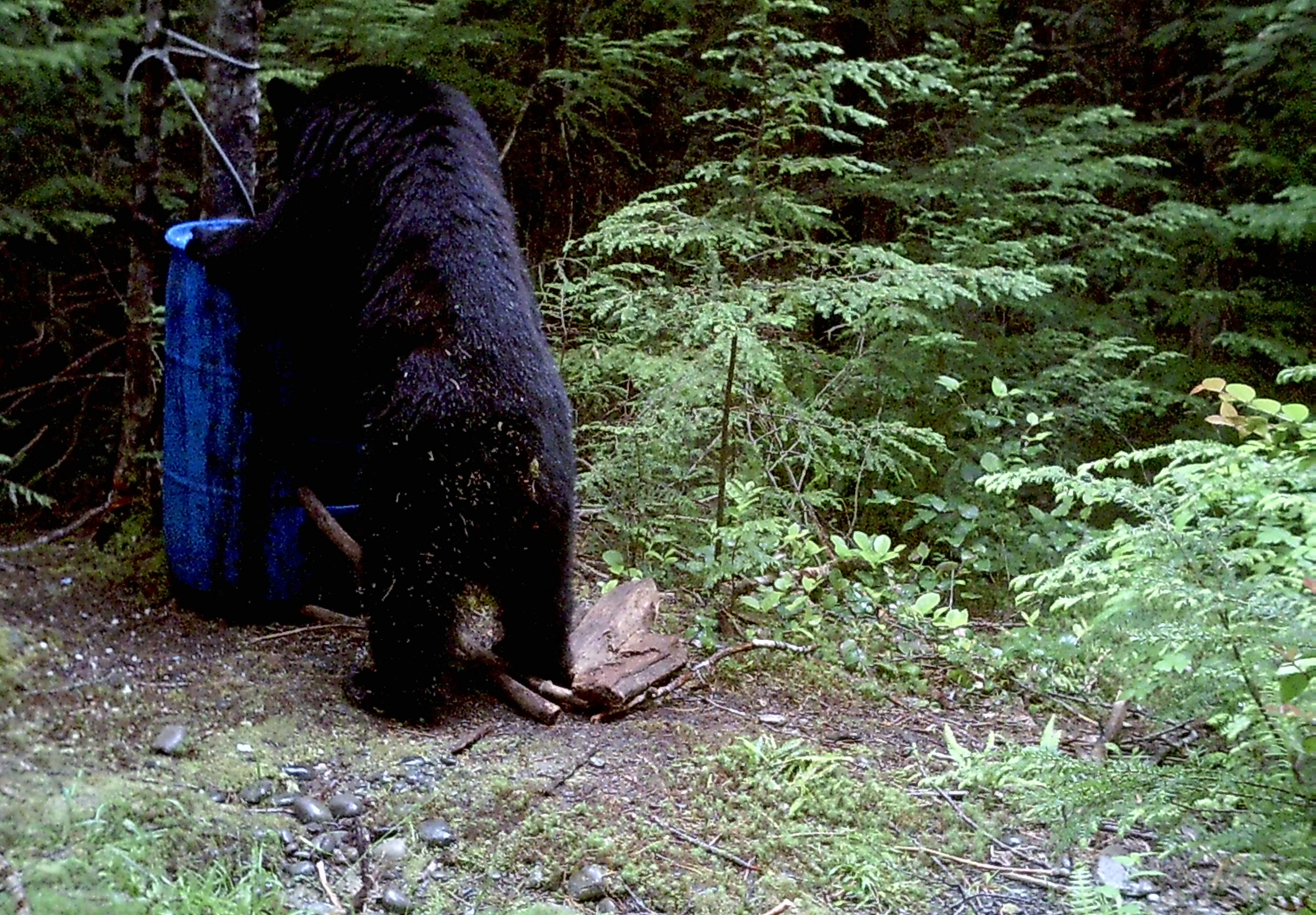
The trail camera also showed this particular boar was consistently hitting the same bear bait site every day about an hour before dark. This is exactly what you want to see on a bear hunt. Unless you've got a bigger bear hitting another bait site during the day, you should plan on hunting that bait site as soon as possible if you get a photo like that.
Set Up a Well-Camouflaged Ground Blind or Treestand
When you set up a new bear bait site, set up your ground blind or treestand at the same time. You will probably cause a short-term disruption in bear activity in the area when you set up the bait site. However, doing both at the same time will minimize the total disruption to the area, as opposed to setting them up at different times. Additionally, this ensures the bears get used to the blind or stand while they get used to eating from the bait site.
Mature bears will attempt to circle downwind of a bait site to see if there is anything unusual going on before coming in to eat. For this reason, try to place your stand downwind of the bait site based on the prevailing winds in the area. If possible, try to position it in such a manner that some sort of terrain feature prevents bears from circling downwind of the stand.
Try to blend in your blind as much as possible with the surrounding area. Make sure you leave a good shooting lane between the blind and the bait site, but other than that, more vegetation around the blind is usually better. Take special care to set up the blind so a hunter is not silhouetted inside it and that any movements made by the hunter are as obscured as possible.
Notice how this blind is tucked into the woods and blends in nicely.
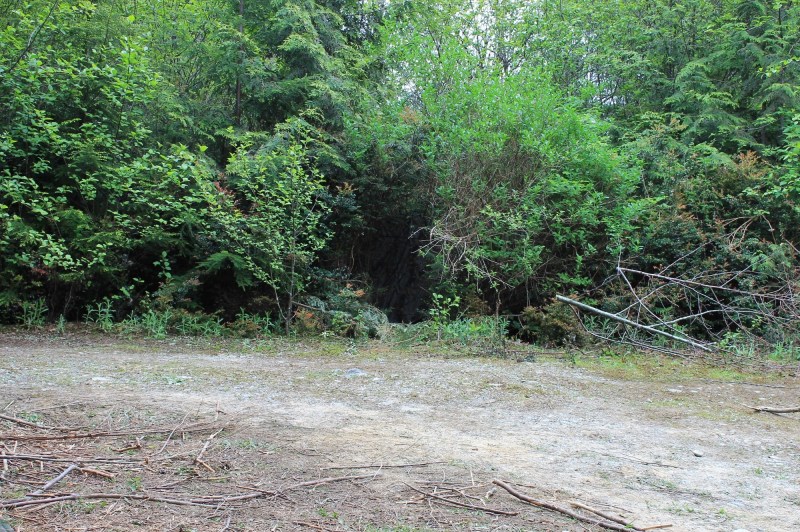
Use the Same Routine Over and Over Again
When you check and refresh your bear bait, do your best to follow the same routine each time you visit. It is not uncommon for bears to hang out close to a bait site they like to keep other bears from moving in on the action. It won't take them long to associate the noises you make while refreshing the bait with a metaphorical dinner bell.
This also means you need to do your best to make things sound as normal as possible when you come in to hunt a particular bait site. Bears are clever animals and they will know something is amiss if you are careless and do something different from your normal routine.
For example, some hunters like to drive to the bait and leave their truck running while they check their trail camera and add more bait to the site. You can also carry your bait in plastic buckets and bang the buckets around while you empty them of bait. Make sure you follow the same routine every time.
When you decide to hunt at a particular bear bait site, get a friend to come with you and carry out your routine while you get set in your blind. There is a good chance the bear will have no idea there is anything different going on until it is too late.
Remove Bait
Evenings seem much more productive for hunting bears than mornings. The big bear usually decides the coast is clear and will come out to eat during the last few minutes of light. Unfortunately, bears, especially big ones, sometimes come in and eat after dark no matter what you do.
One possible solution is to take the bait with you when you leave after your evening hunt. Obviously, this will prevent the bear from eating while it is dark and while you're not there. Hopefully, this will make the bear come in to eat a little earlier the next day.
I hope you picked up a few tips on how to bait bears. Remember, safety and legality take priority over everything when it comes to bears of any kind. Be careful out there, baiters!
Are you ready to do some bear hunting?
All bear hunting photos courtesy of Big Game Hunting Adventures.
Like what you see here? You can read more great articles by John McAdams on his hunting blog. Follow him on Facebook The Big Game Hunting Blog or Twitter @
